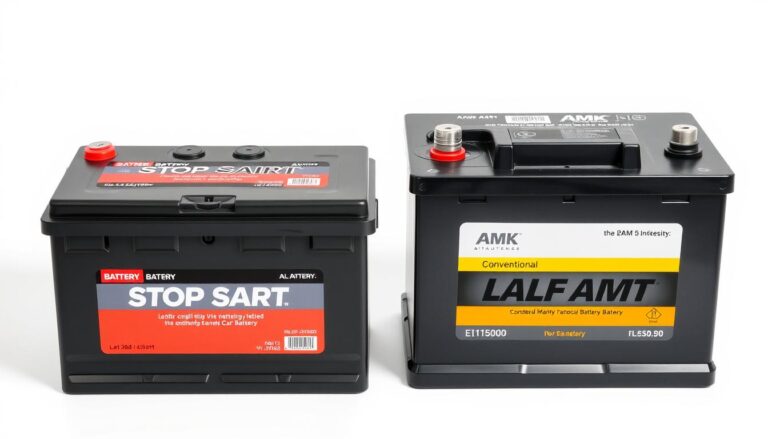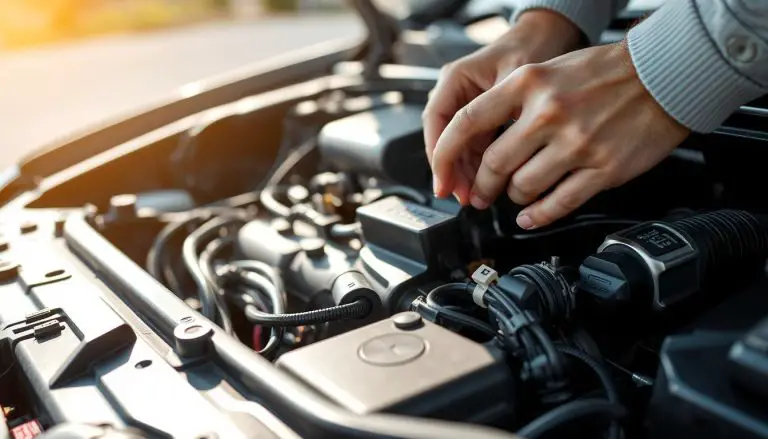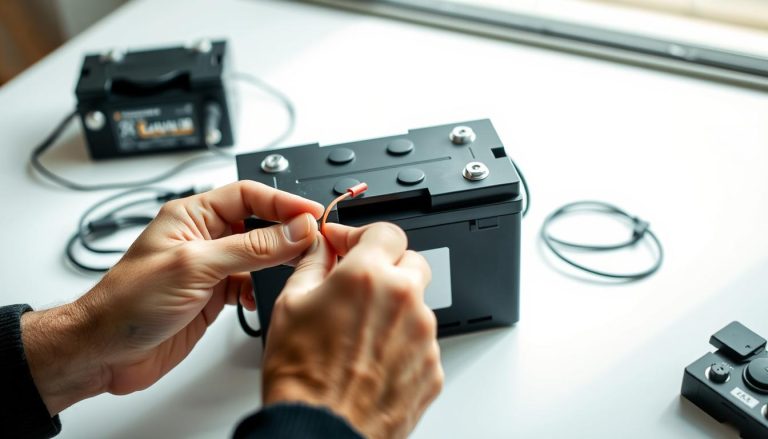Experiencing a dead car battery can be frustrating, especially when you’ve recently replaced it or had your alternator checked. You might wonder what’s going on, given that your alternator is functioning properly.
There are several potential causes for this issue, including parasitic drain, faulty wiring, or even a malfunctioning component in your vehicle’s electrical system. Understanding these factors is crucial to diagnosing and resolving the problem.
A parasitic drain occurs when a component in your vehicle continues to draw power from the battery even after the engine is turned off. This can lead to a dead battery over time.
Key Takeaways
- Parasitic drain can cause a car battery to drain.
- A faulty wiring system can lead to battery drain.
- Malfunctioning components in the electrical system can also cause issues.
- Regular checks can help identify potential problems early.
- Understanding the causes can help in resolving the issue effectively.
Understanding the Battery-Alternator Relationship
Understanding how your car’s battery and alternator interact is key to diagnosing electrical system issues. The battery and alternator work together to ensure your vehicle’s electrical system functions properly.
How Your Car’s Electrical System Works
The car’s electrical system is a complex network that relies on the battery and alternator to operate. The battery provides the initial power to start the engine, while the alternator recharges the battery and powers the electrical systems when the engine is running. Key components include:
- The battery, which supplies power to the starter motor and other components.
- The alternator, which generates electricity to recharge the battery and power electrical accessories.
- Wiring and electrical connectors that facilitate the flow of electricity.
Signs of a Dying Battery vs. Alternator Issues
Distinguishing between a dying battery and alternator issues can be challenging, but there are distinct signs. A dying battery may cause slow engine crank, dim lights, or failure to start. In contrast, alternator issues might result in dim or flickering lights, a dead battery, or malfunctioning accessories. Common signs include:
- Dim or flickering headlights.
- Slow engine crank or failure to start.
- Malfunctioning electrical accessories.
My Car Battery Keeps Dying, But My Alternator is Good: Common Causes
If your car’s alternator is functioning properly, yet the battery continues to die, there are several potential causes to investigate. Understanding these factors can help you diagnose and potentially fix the issue.
Parasitic Drains: The Silent Battery Killers
Parasitic drains refer to the continuous draw of power from your car’s battery even when the engine is turned off. This can be caused by various components that remain active or malfunctioning.
Identifying Common Parasitic Draw Sources
Common sources include interior lights, alarm systems, and aftermarket electronics. To identify a parasitic drain, you can use a multimeter to measure the current draw on your battery.
How Much Drain is Too Much?
A drain of more than 50 milliamps is generally considered excessive and can lead to battery drain issues. Refer to the table below for a breakdown of acceptable vs. excessive drain levels.
| Drain Level (milliamps) | Status |
|---|---|
| 0-50 | Normal |
| 50-100 | Caution: Potential Drain |
| >100 | Excessive: Likely Cause of Battery Drain |
Age and Temperature Effects on Battery Performance
Battery age and extreme temperatures can significantly impact performance. Older batteries may not hold a charge as well, while extreme temperatures can accelerate degradation.
Corroded Connections and Terminals
Corrosion on battery terminals and connections can impede the flow of electricity, leading to battery drain issues. Regular cleaning and maintenance can help prevent this.
How to Diagnose Battery Drain Issues
Understanding why your car battery keeps dying requires a step-by-step diagnostic approach. Diagnosing the issue involves a few key tests that can help identify the root cause of the problem.
Using a Multimeter to Test Battery Voltage
A multimeter is a crucial tool for diagnosing battery-related issues. It allows you to measure the voltage of your car battery accurately.
Step-by-Step Voltage Testing Procedure
To test your battery voltage, set your multimeter to DC volts and connect it to the battery terminals. A fully charged battery should read around 12.6 volts.
Interpreting Voltage Readings
Voltage readings below 12.4 volts indicate a partially discharged battery. If the voltage is significantly lower, it may indicate a deeper discharge or a battery issue. For more information on battery health, you can visit this resource.
Performing a Parasitic Draw Test
A parasitic draw test helps identify if there’s an electrical component draining your battery when the car is off. Use your multimeter to measure the current draw on your battery.
Professional Diagnostic Options
If you’re not comfortable performing these tests yourself, consider consulting a professional mechanic. They have the tools and expertise to diagnose battery drain issues accurately.

| Test | Purpose | Tool Required |
|---|---|---|
| Battery Voltage Test | Measure battery health | Multimeter |
| Parasitic Draw Test | Identify electrical drains | Multimeter |
Electrical Components That Commonly Drain Batteries
Understanding the electrical components that commonly drain car batteries is essential for maintaining your vehicle’s health. Modern cars are equipped with numerous electrical systems that, while convenient, can sometimes lead to battery drain issues if not properly managed.

Interior Lights and Door Switches
One of the most common causes of battery drain is interior lights or door switches that malfunction. If a light remains on or a door switch fails to cut off power when the door is closed, it can slowly drain the battery. Regular checks of these components can help prevent unexpected battery drain.
Aftermarket Electronics and Accessories
Aftermarket electronics and accessories, such as GPS devices, dash cams, or upgraded stereo systems, can also contribute to battery drain if not installed correctly. Ensuring that these devices are properly wired and configured can mitigate this risk. Professional installation is recommended to avoid any potential issues.
Faulty Control Modules and Computers
Faulty control modules and computers, including the Engine Control Unit (ECU) and Body Control Module (BCM), can cause significant battery drain. These components control various aspects of your vehicle’s operation, and when they malfunction, they can draw excessive power.
Common ECU and BCM Issues
Common issues with ECU and BCM include software glitches, hardware failures, and improper calibration. These problems can lead to continuous power draw, draining the battery over time.
“A faulty ECU can cause a parasitic drain, leading to a dead battery in a matter of days.”
Diagnosing Computer-Related Drains
Diagnosing computer-related drains involves using specialized equipment to monitor the electrical system’s power draw. Mechanics can use this data to identify if a control module is malfunctioning and causing the drain. Prompt diagnosis is key to preventing further battery damage.
Fixing Battery Drain Issues: Step-by-Step Solutions
Fixing battery drain issues requires a systematic approach, starting with understanding the root causes and implementing corrective measures. By addressing the problem methodically, you can identify and fix the underlying issues affecting your car battery life.
Cleaning Battery Terminals and Connections
One of the simplest yet most effective steps in battery maintenance is cleaning the battery terminals and connections. Corrosion on these parts can significantly impact your battery’s performance.
Required Tools and Materials
To clean your battery terminals, you’ll need baking soda, water, a wire brush, and protective gloves. These materials are readily available and inexpensive.
Safe Cleaning Procedure
Mix baking soda and water to form a paste, then use the wire brush to scrub away corrosion from the terminals. Ensure the area is well-ventilated and avoid getting the mixture into the battery cells. Rinse with water and dry thoroughly.
Addressing Parasitic Drains
Parasitic drain is a common issue that can drain your battery. Identifying and fixing these drains is crucial for maintaining your car’s electrical system.
Fuse Pulling Method to Isolate Drains
One effective method to identify parasitic drains is by pulling fuses one by one and monitoring the drain on your battery. This process helps isolate the circuit causing the issue.
Fixing or Disconnecting Problem Circuits
Once the problematic circuit is identified, you can either repair or disconnect it to prevent further drain. This might involve replacing faulty components or rewiring parts of the circuit.
When to Replace Your Battery
Despite your best efforts in battery maintenance, there comes a time when replacing your car battery is the most cost-effective solution. Signs that it’s time for a replacement include age, frequent drain issues, and visible wear.
Preventative Maintenance to Extend Battery Life
Extending the life of your car battery requires some simple preventative measures. By incorporating regular maintenance into your routine, you can significantly reduce the likelihood of unexpected battery failures. Effective battery maintenance is key to ensuring your vehicle remains reliable.
Regular Battery Testing and Inspection
Regular testing and inspection of your car battery are crucial for identifying potential issues before they become major problems. This includes checking the battery’s voltage, inspecting for signs of wear, and ensuring the terminals are clean and free of corrosion. By doing so, you can help prolong your car battery life.
- Check battery voltage regularly
- Inspect for signs of wear and corrosion
- Clean terminals and connections
Driving Habits That Preserve Battery Health
Your driving habits can significantly impact the health and longevity of your car battery. Avoiding short trips, minimizing the use of electrical accessories when the engine is off, and ensuring your alternator is functioning properly can all contribute to preserving battery health.
Seasonal Battery Care Tips
Different seasons present unique challenges for your car battery. In cold weather, batteries lose power more quickly, while hot weather can cause fluid evaporation. Being aware of these seasonal changes and taking appropriate measures, such as checking battery fluid levels and keeping your battery terminals clean, can help maintain your battery’s health.
Conclusion
Understanding the causes of car battery drain is crucial for preventing unexpected breakdowns. Even with a good alternator, factors like age, extreme temperatures, and parasitic drain can significantly impact battery life.
Regular battery maintenance is key to extending its lifespan. This includes checking for electrical drains, cleaning corroded terminals, and avoiding short trips. By taking these steps, you can identify potential issues before they become major problems.
By being proactive and addressing alternator issues and maintaining your car’s electrical system, you can ensure your vehicle remains reliable and running smoothly.
FAQ
Why does my car battery keep dying even though my alternator is good?
There are several reasons why your car battery may be dying, including parasitic drains, age and temperature effects, and corroded connections.
What is a parasitic drain, and how can I identify it?
A parasitic drain refers to an electrical component that continues to draw power from your battery even when your car is turned off. You can identify it by using a multimeter to test for excessive drain.
How do I test my car battery voltage using a multimeter?
To test your car battery voltage, set your multimeter to DC volts, connect the leads to the battery terminals, and take a reading. A fully charged battery should read around 12.6 volts.
What are some common electrical components that can cause battery drain?
Common culprits include interior lights, door switches, aftermarket electronics, and faulty control modules.
How can I prevent my car battery from dying prematurely?
Regular battery testing, proper driving habits, and seasonal care can help extend your battery’s life.
When should I replace my car battery?
Consider replacing your battery every 5 years or when you notice significant signs of wear, such as slow engine crank or dim headlights.
Can a faulty alternator cause my battery to drain?
While a faulty alternator can cause issues, a good alternator can still be accompanied by battery drain due to other factors.
How do I clean corroded battery terminals?
Mix baking soda and water to create a paste, apply it to the terminals, and scrub with a brush. Rinse with water and dry thoroughly.


